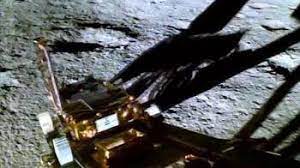After the Chandrayaan-3 lander landed softly on the South Pole of the Moon, the Chandrayaan-3 rover travelled 8m, said ISRO. ISRO also confirmed that the payloads Chandrayaan-3 carried have been switched on.
As known to all, Chandrayaan-3 succeeded in landing softly on the South Pole of the Moon this very Wednesday. No sooner did the Indian spacecraft achieve this achievement than its success story got popularized worldwide. Before India, only three nations had been able to make a soft landing on the Moon: Russia, China, and the USA. It is the first spacecraft to land on the South Pole of the Moon. This project was also way cheaper than the rest, which adds to its merits.
This Thursday, ISRO’s statement “India took a walk on the Moon!” confirmed that the rover has successfully walked on the lunar surface. According to the updates from ISRO, the Chandrayaan-3 rover has travelled 8m efficiently. And according to Friday’s updates from the space agency, the two science experiments the rover was carrying have also been switched on. “All planned rover movements have been verified. The rover has successfully traversed a distance of about eight meters,” ISRO said. It also added that rover payloads LIBS (LASER-Induced Breakdown Spectroscope) and APXS (Alpha Particle X-Ray Spectrometer) had been switched on. “All payloads on the propulsion module, lander module, and rover are performing nominally,” the space agency said.
How did the Rover come out, and what does it do?
The rover rolled out of the lander with the help of the lander’s two-segmented foldable ramp and an attachment cord. The cord was pulled in after the rover touched the ground. As the rover rolled out, a solar panel opened up. The solar panel is meant to allow the rover to generate 50W of power for its journey. The total travelling capacity of the rover is 500 meters.
The data collected by the rover is transmitted to the lander, which is further conveyed to the orbiter of Chandrayaan-2 (the previous Chandrayaan mission). Then the orbiter sends the received data to Earth. And all the experiments have also been turned on to collect data during the lunar day.
Scientific experiments carried by the Rover:
There are two scientific experiments on the rover: LASER-Induced Breakdown Spectroscopy (LIBS), and Alpha Particle X-ray Spectrometer (APXS). Whereas, LIBS will determine the chemical and mineral composition of the lunar surface. APXS, on the other hand, will determine the composition of elements such as magnesium, aluminum, silicon, potassium, calcium, titanium, and iron in the lunar soil and rocks.

